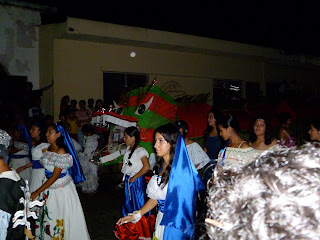
On Monday, I'm happy to say, my doctor, Anita Shaffer, listened to my lungs and pronounced them clear. It's a joy to be up and about again, doing some of the things I treasure during my trips home. One of them is cooking kale - with garlic and pinenuts and olive oil, braised rapidly, it's a glorious dish, all the better because kale never, ever shows up in Salvadoran markets. I cooked that tonight along with a bean soup that I learned to make in El Salvador - roasted tomatoes, onion, garlic and jalapeños pureed with red beans, ancho chiles and stock, served with avocado, sour cream (or crema in El Salvador), and chives. This was for my sister friends in Prospect House, a community on Capitol Hill that I used to live in, and they loved it. I even found coconut ice cream for dessert, which has always been the PazSalud specialty.
I haven't found a source of chives in El Salvador, so I'm bringing some seeds back, along with seeds for a cherry tomato suited to the tropics, basil, amaranth and endive. It'll be fun to see how it all does, growing in pots up on our sun deck/clothes drying deck. Got to be a sign of good health, creating and rejoicing in favorite flavors. I'm thankful to be enjoying it all.














